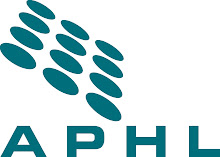Over the past year, public health laboratories, their budgets ravaged by state and local cuts, have lost funding for operations, instrumentation and staff. Since January 1, 2008, an APHL survey shows the extent of the damage: labs have lost close to 500 full-time positions out of a total workforce of only 6500, and more losses are anticipated. Entire laboratory programs have been eliminated, because there were simply no funds to sustain them.
Yet, despite a bleak outlook and limited resources, laboratories, when thrust into the latest crisis with the H1N1 outbreak, have responded with skill, ingenuity and grit. In the first week of the outbreak, they subtyped nearly 300 suspect specimens for referral to CDC for final confirmation.
This week public health labs in some 65 locations across the country will assume responsibility for confirmatory (definitive) testing for the novel H1N1 virus, thus accelerating delivery of test results and implementation of disease-control measures. This eases some of the pressure on CDC laboratories but the demand for testing remains intense at the state and local level. Laboratory scientists, administrators, IT specialists and other staff are all racing to keep pace, working late into the night and on weekends.
This level of response isn’t surprising, however. We saw it earlier this year during the Salmonella outbreak when thousands of human and environmental samples poured into PulseNet labs for testing. We saw it in 2008 during the Iowa floods, when laboratorians worked to keep up with the increased demand in water testing. And we saw the same response after hurricanes Ike and Katrina pummeled the Gulf coasts, during the Anthrax attacks in 2002 and following the World Trade Center attack in 2001, to name a few examples.
The staff working flat out in our labs have opted to stay in the field of public health to help people. If money was a primary motivating factor, they would have left long ago! Instead they work to guarantee that emerging diseases and other health threats are detected promptly and that health officials have the information they require to mount an effective response.
It is a testimony to their dedication and hard work that they are continuing testing for other key public health functions—newborn screening, drinking water testing and analysis of foodborne pathogens, for instance—while managing the burgeoning load of H1N1 testing.
Tuesday, May 5, 2009
Subscribe to:
Post Comments (Atom)





No comments:
Post a Comment